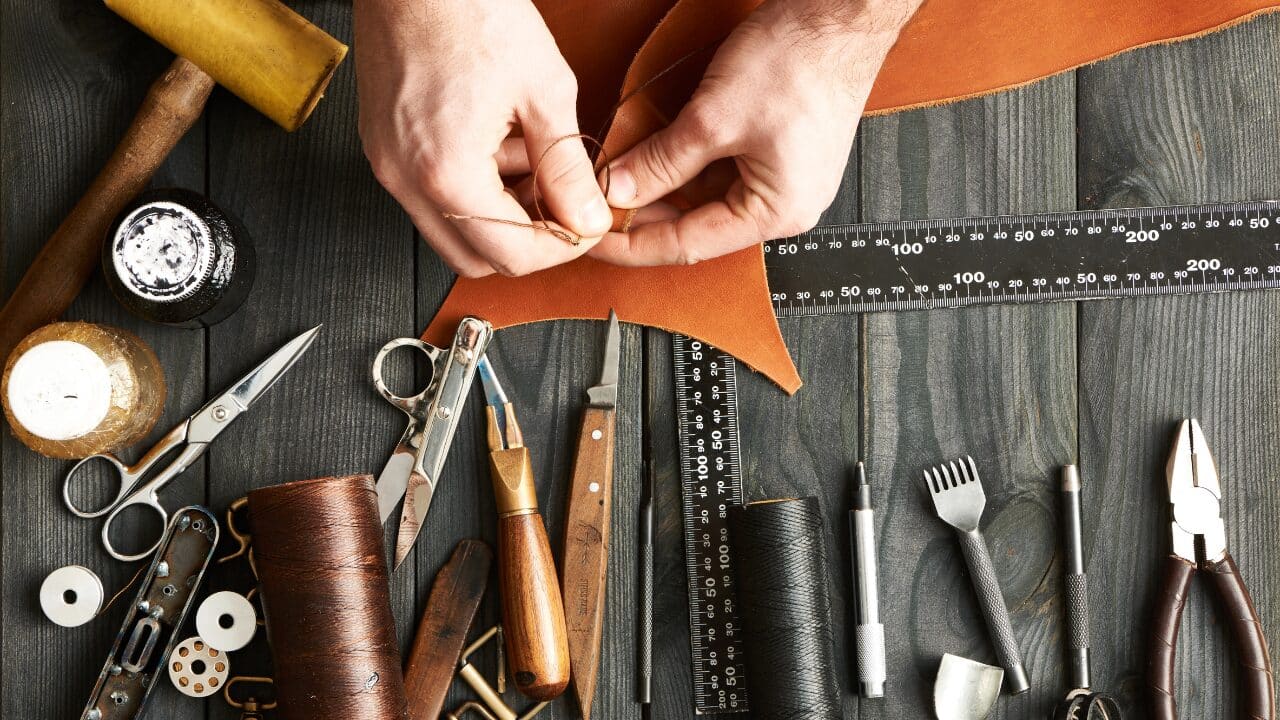Leather has long been integral to human history due to its strength, durability, and timeless beauty. Yet, how exactly do animal hides turn into high-quality leather products?
This comprehensive guide offers insight into this fascinating world of leather manufacturing, whether you want to start your own leatherworking business or understand why some gorgeous bags you have been eyeing exist in the first place. If that sounds interesting, then keep reading.
Table of Contents
Tools of the Trade
Professional leather manufacturers no longer rely on medieval handcrafting methods alone for creating leather goods. Instead, state-of-the-art leather cutting machineryhas become more prominent in their industry.
A leather laser cutter represents precision when it comes to creating intricate patterns and designs quickly with automated processes. This leather cutting tool is essential for high-end leather goods with intricate cutouts or intricate details.
Understanding Leather Strains
Leather isn’t a universal material. Each strain provides tailored solutions for specific uses, and characteristics can make one type’s strengths another’s weaknesses. Obviously, cowhide leather is the most used, thanks to its durability and toughness.
It can be found everywhere, from boots to upholstery. Recently, goat leather, which is much thinner than cowhide, has proven highly resilient against wear and tear.
Popular luxury products using it include designer purses as well as traditional garments made of goat skin. Also, lamb leather stands out as the softest kind. This is perfect for clothing designed for areas requiring flexibility, such as boots.
Craft of Leather Manufacturing
Leather production still relies on skilled artisans, upholding tradition, and partisanship. Skivers and bevelers used by these talented craftspeople prepare and edge leather in ways even advanced machines cannot match, while processes like saddle stitching and edge painting add value and durability to the final product.
Thanks to growing awareness around ethical and sustainable practices in leather production, this industry is adopting more responsible sourcing and production methods.
Computer-aided design (CAD) software
Leather crafting has expanded beyond its traditional confines with technology. Laser cutting and computer-aided design (CAD) software have emerged as key modern tools, enabling artisans to achieve precision and complexity that would otherwise be near impossible by hand.
Furthermore, thebest laser cutter for leather facilitates customization at scales and speeds not possible with traditional techniques alone, offering new avenues of personalization and creative expression in leatherwork. By taking advantage of such advances in leatherworking, artisanship is preserved for future generations and confidently moving into its future with equal strides.
New Materials
Leather production’s environmental footprint has led the industry to pursue alternative materials that mirror its durability and aesthetics while leaving less of an ecological impact.
Lab-grown leather and plant-based leathers derived from mushrooms, pineapple leaves, and cacti are emerging as viable sustainable options that offer consumers ethical alternatives and push traditional leatherworking into new territories by adding textures and properties into its craft.
This shift towards sustainability is changing the future of leather manufacturing to better align with modern values of environmental stewardship and ethical responsibility.
Conclusion
Leatherworking’s development showcases an amazing fusion of tradition and innovation. By merging cutting-edge technologies such as CAD software and laser cutting with ancient craft techniques, this industry not only increases precision and scope of designs but also embraces customization to an unprecedented degree.
Switching to sustainable materials demonstrates a collective dedication to environmental responsibility and ethical business practices. These advancements herald a new era for leatherworking, one that celebrates its rich heritage while boldly adapting to contemporary challenges and opportunities. Such dynamic adaptability ensures leatherworking remains vibrant and relevant art form to inspire creators and consumers for future generations.





